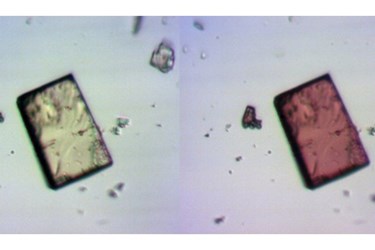New Microscopic Sponging Material Could Aid In Drug Delivery
By Joel Lindsey

Chemists at the State University of New York-Buffalo and Penn State-Hazleton have created a new microscopic “sponge” that could aid in a variety of medical procedures, such as soaking up drugs and delivering them to a specific part of the body, or capturing and storing unwanted gases.
The team of researchers, led by University at Buffalo Assistant Professor of Chemistry Jason Benedict, calls their recent creation UBMOF-1.
“The material — a metal-organic framework, or ‘MOF’ — is a hole-filled crystal that could act as a sponge, capturing molecules of specific sizes and shapes in its pores,” a press release published by the University at Buffalo’s News Center said.
“MOFs are like molecular sponges — they’re crystals that have pores,” Benedict said. “Typically, they are these passive materials: they’re static. You synthesize them, and that’s the end of the road. What we’re trying to do is to take these passive materials and make them active, so that when you apply a stimulus like light, you can make them change their chemical properties, including the shape of their pores.”
According to Benedict and his team, there are two specific characteristics that make UBMOF-1 unique: When hit by ultraviolet light the crystal’s pores change shape and the crystal changes color.
Altering the shape of the crystal’s pores could allow surgeons, doctors, and researchers to control which compounds can enter or exit the pores, allowing for highly controlled storage and transport of chemicals. Such a feature could be useful in drug delivery applications or any other scenario in which “you don’t want the chemicals to come out until they get where they need to be,” Benedict said.
Similarly, the ability to change the color of UBMOF-1 “suggests that the material’s electronic properties are shifting, which could affect the types of chemical compounds that are attracted into the pores.”
Benedict’s team published its report about UBMOF-1 last month in Chemical Communications.
Researchers involved with the project are now turning attention to figuring out how to make constricted pores open back to their original shape and size, a development that would make UBMOF-1 more readily usable.
UBMOF-1 is the newest arrival in the growing field of MOF. According to a recent article in Science magazine, “MOFs with permanent porosity are more extensive in their variety and multiplicity than any other class of porous materials. These aspects have made MOFs ideal candidates for storage of fuels (hydrogen and methane), capture of carbon dioxide, and catalysis applications, to mention a few.”
Image credit: Ian M. Walton, State University of New York-Buffalo
